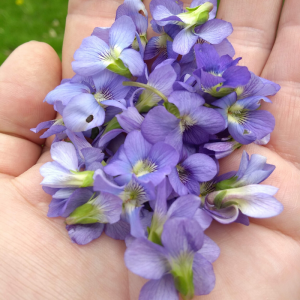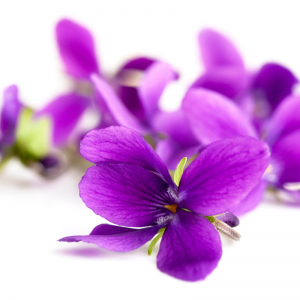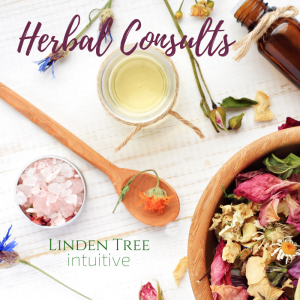HERB NAME: Violet Viola sororia is a lavendor colored spring flower with 5 petals and heart-shaped leaves.
Violet leaves are best picked when young and small, however, be careful to leave the roots undisturbed to help maintain the health of the plant, which spreads by runners just under the soil.
COMMON NAME: Common violet, wild violet.
THERAPEUTIC QUALITIES & USES: The flowers have many culinary uses, and the leaves are used both internally and externally as soothing preparations that have healing benefits for the respiratory system, as well as for the skin. [1]

Violets are:
- anodyne – Helps reduce pain
- anti-inflammatory – Reduces inflammation
- antitussive – Helps to reduce or eliminate coughing
- emollient – Soothing effect on the skin
- expectorant – Facilitates removal of excess mucous
SYMBOLISM: Violets symbolize many things, from luck, love, and passion, to humility and purity. They are sometimes associated with the Virgin Mary in Christianity. [2]
According to Roman traditions, however, the violet is a symbol of mourning and used to make sure the deceased would rest in peace. [3]
During Victorian times, violet flowers spoke of child-like innocence.

SPIRITUAL CONNECTIONS: Violets have been used in spells for protection, luck, love, healing, and more, and are often a favorite when a relationship is ending or in major transition. [4]
Violets are associated with Venus and may be used to help someone seeking new love, especially when feeling unlucky. Additionally, violets are used to increase the power of wishes. [5]
HOW TO USE:
Violet flowers can be used to make violet sugar, jelly vinegar, syrup, decoration, tea, bath salts, and more. With the syrup, jelly, and vinegar, the flowers will impart a beautiful color.
To add to bath salts, it’s best to dry the flowers first.
There are many recipes available on the internet.
Violet leaves are best used young and have an earthy flavor. They can be used fresh or dried. Steep the leaves in freshly boiled water, and blend with other soothing herbs to compliment the effects you are looking for.
Other herbs that blend well with violets are…
Lavender (Lavandula angustifolia) – For more relaxing and soothing action.
Calendula (Calendula officinalis) – To increase the soothing and healing qualities of skin preparations.
Plantain (Plantago spp) – Provides additional emollient and restorative effects.
References:
- https://anniesremedy.com/viola-spp-violet-leaf.php
- https://www.atozflowers.com/flower/violas/
- https://www.auntyflo.com/flower-dictionary/violet
- http://www.gardensablaze.com/HerbVioletMag.htm
- https://witchipedia.com/book-of-shadows/herblore/violet/
Disclaimer: Linden Tree Intuitive would like to remind you to consult with your doctor for all things medical. We do not diagnose, treat, prevent, or cure any illness or disease. All material in this blog is for informational purposes only, and you are encouraged to do your own research and question everything!






